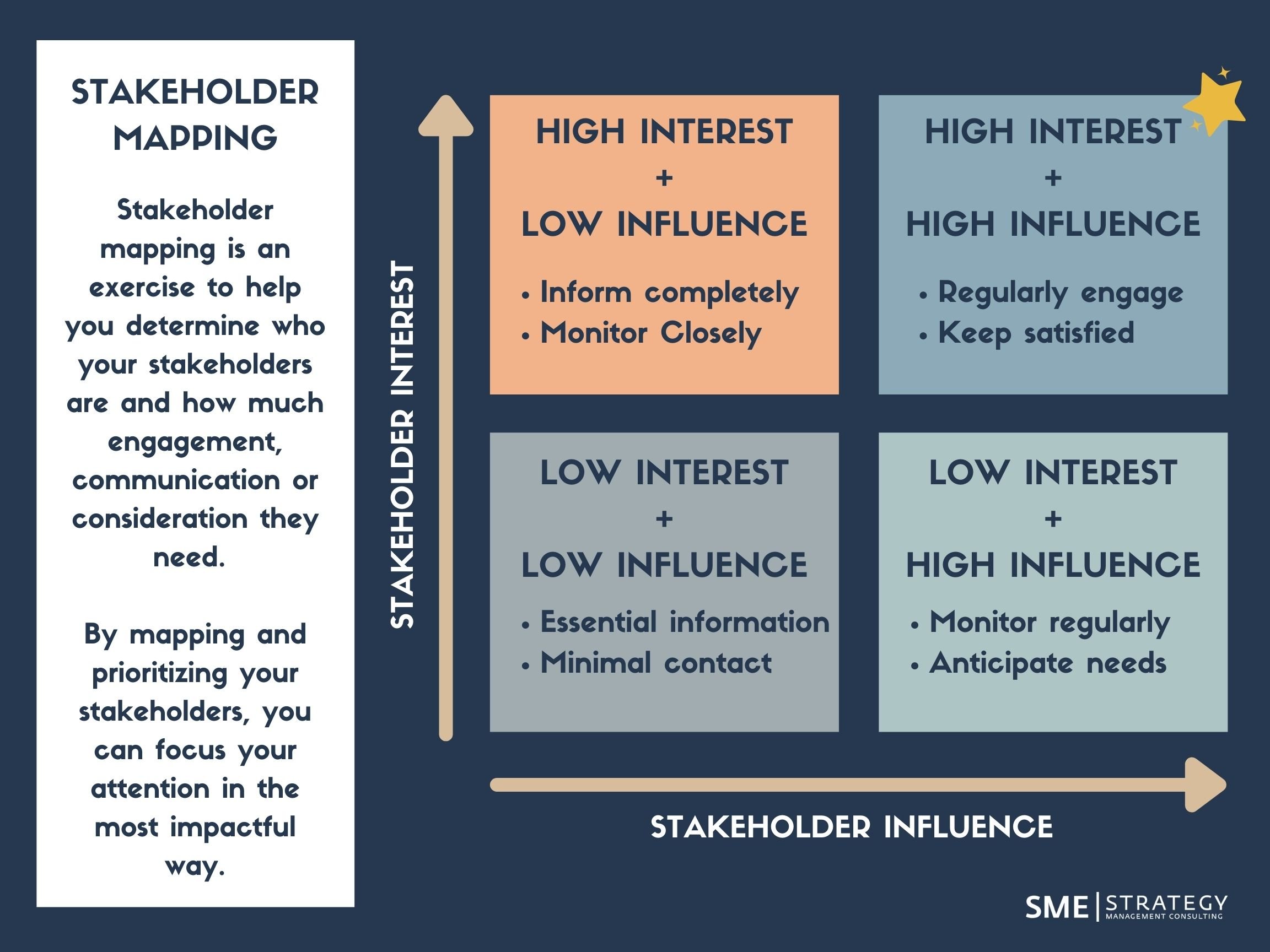
Recently, we were asked for advice on how to effectively manage stakeholder engagement as part of the strategic planning process for a non-profit organization. The goal was to launch a new strategic plan and ensure that it would outlast the terms of the existing board members by garnering engagement from stakeholders.
Stakeholder engagement is a complex and multifaceted topic that involves various tasks, such as gathering and sharing information, addressing concerns and grievances from stakeholders, evaluating the impact and significance of different stakeholder groups, and facilitating communication through diverse channels.
In this article, we will cover the fundamental aspects of stakeholder engagement, providing you with a basic understanding of the topic. If you are interested in staying updated with our future articles, feel free to subscribe to our leaders digest newsletter for updates.
First, here are a few considerations before you reach out to your stakeholders:
- If you want the stakeholder engagement piece to "stick", it needs to be a core part of your business process
- It is important to understand what your stakeholders contribute (are they highly interested or highly engaged?)
- Make stakeholder engagement a key part of your strategy implementation
- Ensure there is leadership alignment around who your key stakeholder are so that they can drive the engagement
How do you incorporate stakeholder engagement as part of the strategic planning process?
1) Identify the diverse stakeholder groups as part of your environmental scan before you begin the strategic planning process
- Who is going to be impacted by your project? (be as diverse as possible)
- What are their interests in the project?
- Are the direct and indirect stakeholders?
- Who are the most important stakeholders?
2) Identify who your stakeholder representatives are
- Who are the individuals that you need to talk to as part of each stakeholder group?
3) Create a system to solicit their feedback
- Set a calendar of steps and outreach as part of your action plan (systemize it).
- Seek multiple levels of communication from the organizations (Staff, board, etc.) and consider the modalities that will work best for them (surveys, town halls, 1-on-1 calls, etc).
4) Incorporate their feedback into your strategic planning process
- Use their feedback and concerns, alongside your executive team discussions around your vision and risks to help inform your strategic priorities.
5) Report back
- As part of your strategic plan implementation and communication, go back to your stakeholders and show them what you came up with
- Look at them as strategic partners to help you achieve your goals
Related Content:
Strategic Planning Process (What is it?)
How to Create Team Alignment and Why it's Critical in 2023
As part of your project plan, establish the frequency and amount of information different stakeholders need.
If you incorporate stakeholder engagement into business as usual and look at your stakeholders as strategic partners, you'll have a greater likelihood that the initiatives and collaboration will continue beyond the term of your current board.
If you are looking for expert advice or support on mapping out or creating a Stakeholder engagement plan for your organization, Schedule a free call with our strategic planning consultants to discuss your options.
Watch below: Stakeholder Engagement in 5 Slides
Need a strategic planning facilitator to take your team through the stakeholder engagement process and more? Learn more about our service offerings:
Learn how to lead your strategic planning process solo in our video course



